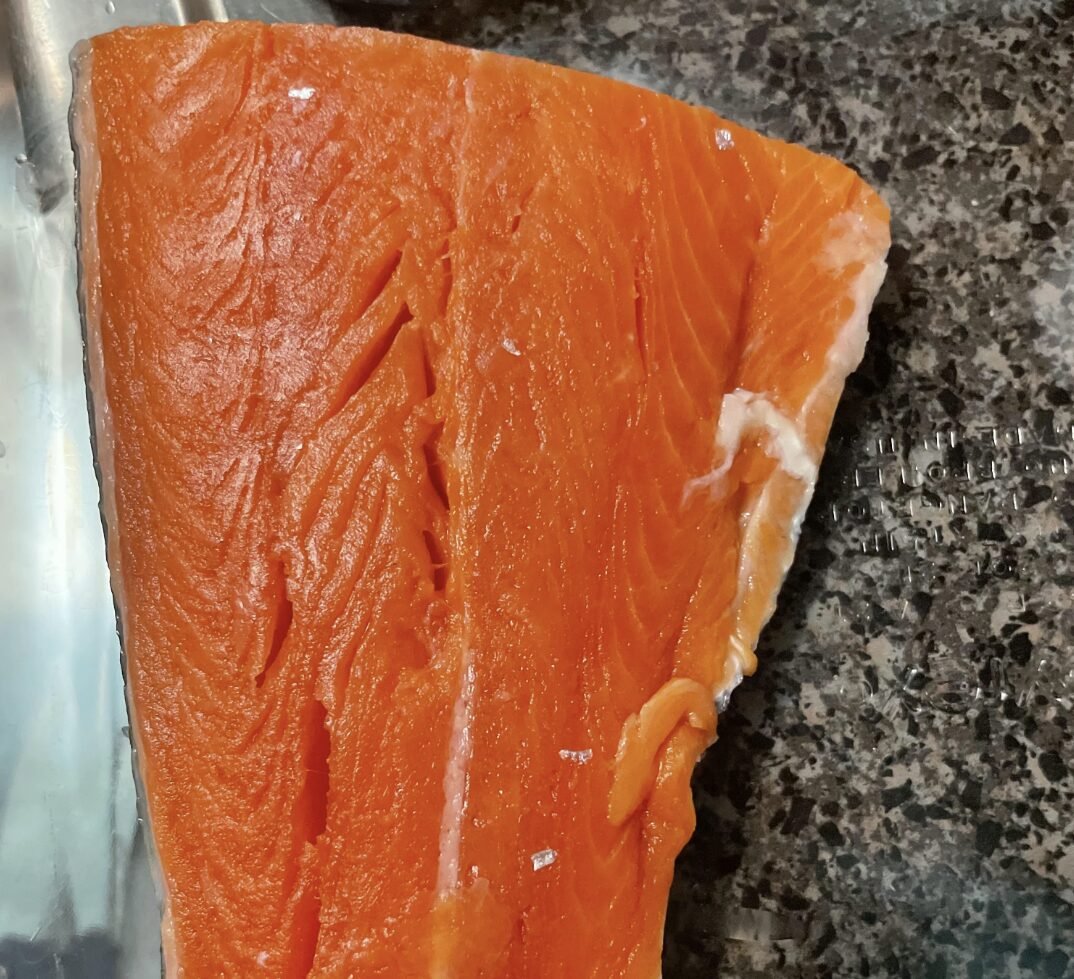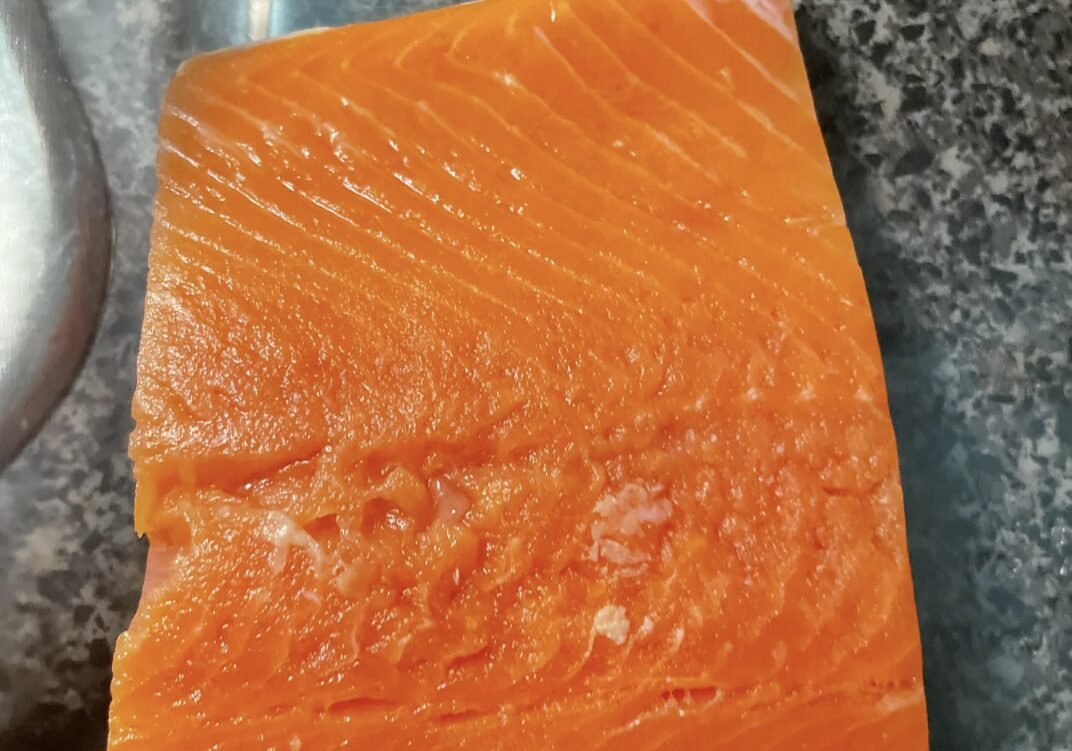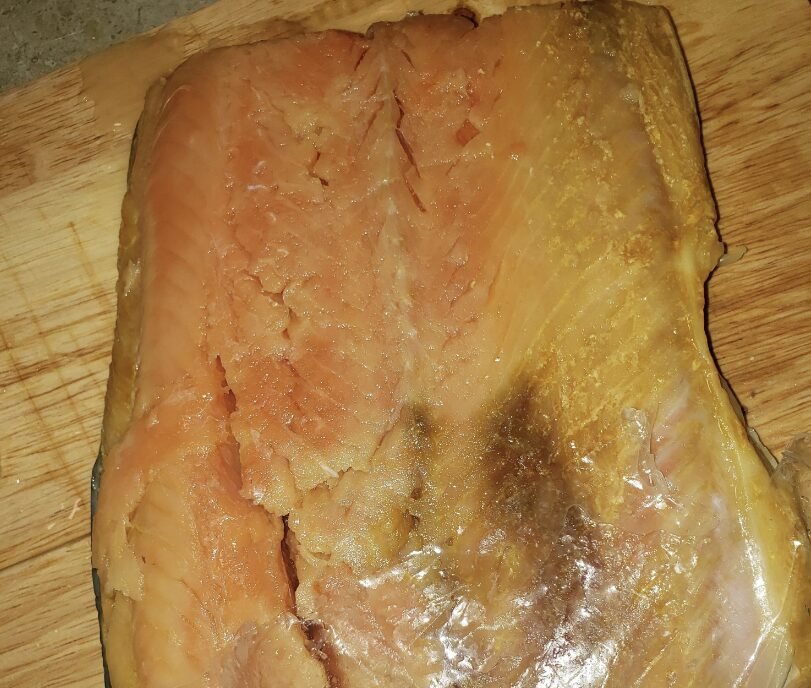ealing with Yellow-Tinted Salmon: A Guide
A Shocking Discovery
My family loves salmon. It’s a staple in our weekly meals, whether grilled with lemon or slow-cooked in teriyaki glaze. However, the other day, I thawed a beautiful fillet from the freezer and noticed a strange yellowish tint on the flesh. I wondered, “What is this, and can we still eat it?”
Investigating the Yellow Tint
Initially, I panicked. Salmon usually has a gorgeous pink hue, so the yellow spot was alarming. I started retracing my steps to see if I had done something wrong. Had it been in the freezer too long? Was it stored improperly? Did it go bad without me realizing it?

Understanding Fish Fat
After researching seafood safety, I learned that a yellow tint on defrosted salmon isn’t necessarily a cause for panic. The yellow tint often comes from oxidized fat. Salmon, being naturally fatty, can have its fat oxidize and change color if frozen for long periods or improperly stored. This oxidation doesn’t mean the salmon is unsafe to eat. It’s more about the quality and appearance. Ensure the fish doesn’t have signs of spoilage like a sour smell, slimy texture, or off-putting taste.
Improper Packaging and Freezer Burn
Freezer burn can also cause discoloration. If the salmon isn’t properly sealed in the freezer, it can lose moisture and develop yellow or white spots. While disheartening, it’s not the end of the world. Trim off the affected area, and the remaining salmon is usually fine to cook and eat.

Natural Variations
Some salmon species have a slightly yellowish hue to their belly, especially wild-caught ones. Their diet, including crustaceans or algae, can contain pigments that affect flesh color. Farm-raised salmon usually have more consistent color due to their controlled diet, but variations can still occur. So, the yellow tint might just be a natural variation in your salmon.
Checking for Freshness
To ensure the yellowing salmon was still edible, I used the old “sniff test” my grandma taught me. Fresh salmon should have a neutral, briny scent, like a fresh ocean breeze. If it smells overly fishy or sour, it’s likely past its prime. I also pressed down on the flesh to see if it bounced back, and it did. Finally, I trimmed off the yellow section and cooked it with lemon and dill.

Tips to Prevent Yellow Tint
- Seal Properly: Make sure your salmon is airtight before freezing. Vacuum-sealed packaging works best, but plastic wrap and a freezer bag also help.
- Label and Date: Mark when you froze the salmon to track how long it’s been there. The USDA recommends consuming frozen fish within 3 to 8 months for the best quality.
- Rotate Stock: If you buy salmon in bulk, use the older fillets first, following a “first in, first out” mentality.

Conclusion
In the end, my yellow-tinted salmon turned out fine. I grilled it to perfection and served it with garlic asparagus. The family couldn’t tell the difference. It was still juicy and delicious.
So, if you notice your defrosted salmon with a yellowish tint next time, don’t freak out! Do a quick smell check, trim the discolored section if needed, and proceed with your favorite salmon recipe. Chances are, it’s still the tasty, nutrient-packed fish you love, just with a little extra character.